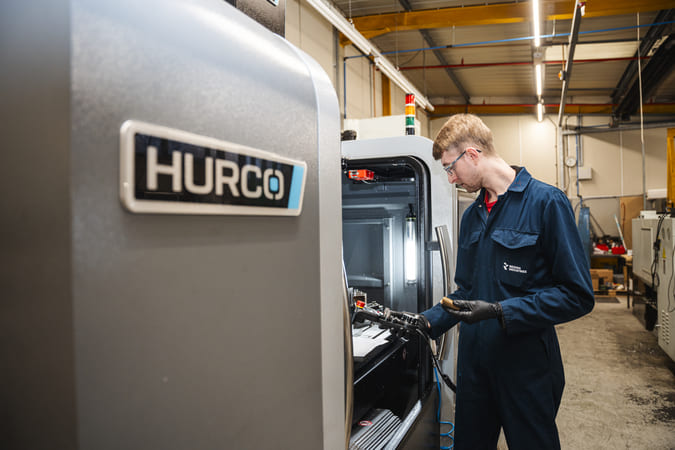
Introduction to Machining
Machining is a fundamental process in manufacturing, responsible for shaping raw materials into precise components that fit exact specifications. From small workshop tools to advanced automated machinery, machining encompasses a wide range of techniques designed to cut, grind, drill, and shape metal, plastic, and other materials. This process is essential in countless industries, including aerospace, automotive, medical devices, and consumer electronics.
Historical Perspective
The origins of machining date back to early human civilisation, when artisans used rudimentary tools to shape stone and metal. With the onset of the Industrial Revolution, machining evolved dramatically, driven by the invention of lathes, milling machines, and drill presses. Steam power and later electricity transformed the speed and efficiency of production, while the development of interchangeable parts revolutionised manufacturing standards.
Core Machining Processes
Machining covers a variety of methods, each tailored to specific production needs. Turning, for example, uses a lathe to rotate a workpiece against a cutting tool, creating symmetrical cylindrical shapes. Milling removes material using rotary cutters, producing complex geometries with high accuracy. Drilling forms precise holes, while grinding smooths surfaces to tight tolerances. Advanced methods, such as electrical discharge machining (EDM) and laser cutting, cater to intricate or heat-sensitive projects.
The Role of CNC Technology
Computer Numerical Control (CNC) systems have completely transformed machining in the modern era. By programming machines with digital instructions, manufacturers can achieve unprecedented precision and repeatability. CNC machining allows for complex designs to be produced quickly and with minimal human intervention, reducing the likelihood of error. Furthermore, CNC systems can operate continuously, enabling high-volume production without compromising quality.
Material Considerations in Machining
The choice of material plays a critical role in determining machining techniques and outcomes. Metals such as aluminium, steel, and titanium are common due to their strength and durability, but they each present different challenges in terms of hardness, heat resistance, and machinability. Plastics and composites are increasingly used for lightweight applications, requiring careful selection of tools and cutting speeds to prevent material damage.
Applications Across Industries
Machining underpins a vast number of industries. In aerospace, precision components are essential for safety and performance, with tolerances measured in microns. The automotive sector relies on machined parts for engines, transmissions, and braking systems. In the medical field, surgical instruments and prosthetics demand meticulous craftsmanship to meet stringent regulatory standards. Even consumer electronics depend on finely machined casings, connectors, and microcomponents.
Sustainability and Efficiency in Machining
As environmental concerns grow, machining has adapted to improve sustainability. Techniques such as dry machining, which eliminates or reduces coolant usage, help minimise waste and chemical disposal. Advanced software now optimises tool paths to reduce material waste and energy consumption. Recycling scrap metal and using sustainable materials are also increasingly common practices in the industry.
Challenges in Modern Machining
While technology has enhanced machining capabilities, challenges remain. High production costs, skilled labour shortages, and the need for continual investment in advanced equipment are significant hurdles for many manufacturers. Additionally, working with exotic or hardened materials often requires specialised tools and processes, increasing complexity and expense.
The Rise of Automation and Robotics
Automation is rapidly changing the face of machining. Robotic arms now handle repetitive tasks such as loading and unloading workpieces, allowing skilled machinists to focus on programming, quality control, and complex problem-solving. This integration of robotics reduces downtime, improves consistency, and can operate around the clock to meet demanding production schedules.
Precision Machining in the Modern Era
In the later stages of machining technology’s evolution, the demand for tighter tolerances and complex designs has given rise to a specialist field known as precision machining. This process focuses on creating components with exact dimensions and exceptional surface finishes, often required in industries where even the smallest deviation can lead to failure. Modern precision machining utilises advanced CNC systems, multi-axis milling machines, and cutting-edge metrology tools to ensure that every piece meets rigorous standards.
The Future of Precision Machining
As global manufacturing continues to advance, precision machining will play an increasingly vital role in delivering the accuracy and reliability industries depend on. Innovations such as AI-driven toolpath optimisation, additive-subtractive hybrid machines, and improved material science will push the boundaries of what is possible. Whether producing aerospace turbine blades, medical implants, or intricate automotive components, precision machining will remain at the forefront of technological progress, ensuring that the products we rely on are manufactured to the highest possible standards.